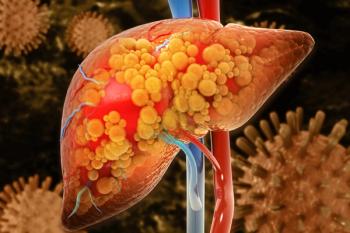
Data Show Diabetics Using Verapamil Have Lower Glucose Levels
The results amplify earlier work at UAB that showed verapamil reversed type 1 diabetes in mice. A clinical trial involving the drug in recently diagnosed patients with type 1 disease is still enrolling participants.
A researcher at the University of Alabama at Birmingham (UAB) has found that diabetics who took the blood pressure medication verapamil during a large-scale study had lower fasting blood glucose levels than other participants.
The findings, published in Diabetes Research and Clinical Practice, follow work that showed verapamil reversed diabetes in mice with type 1 diabetes (T1D), and create anticipation for results of a clinical trial now under way at UAB.
Yulia Khodneva, MD, PhD
Yulia Khodneva, MD, PhD, a research associate at UAB’s Comprehensive Diabetes Center, examined how calcium channel blockers, including verapamil, affected fasting serum glucose in a cohort of adults who were part of a broader study known as REGARDS. Reasons for Geographic and Racial Differences in Stroke project, which is sponsored by the National Institutes of Health, is a 5000-person study seeking insights on cardiovascular risk factors.
Khodneva and colleagues focused on 1484 patients who used calcium channel blockers (CCB), including 174 who used verapamil. They found that while all users of the CCBs experienced serum glucose levels that were 5mg/dL compared with the others, those who used verapamil had particular good results: 10 mg/dL lower serum glucose compared with CCB non-users.
Among insulin users, the results with verapamil were profound: users had 24 mg/dL lower serum glucose than insulin users who also used oral agents, and 37 mg/dL lower than those who used insulin alone.
“The change in glucose for that group compared to those not taking verapamil—37 mg/dL—is almost 4 times higher when you look at the whole sample of diabetic adults,” Khodneva said. “That made us think that verapamil is predominately active for participants who have type 1 diabetes or those with type 2 diabetes who have really damaged beta cells. There seems to be something that works on the structural level, especially for those who have stronger beta-cell damage>'
That finding would be consistent with results found in early work at UAB with mice. As reported previously in
Khodneva distinguished between the results reported in in Diabetes Research and Clinical Practice and the work on ongoing clinical trials at UAB.
“This is a cross-sectional observational study, unlike the current prospective randomized UAB verapamil clinical trial, so we can’t infer causal relationship between using verapamil and lower glucose levels,” she said. “But we can say there is an association with lower glucose levels, and that is absolutely encouraging.”
The clinical trial for verapamil began enrolling patients in January 2015, and the first results involving T1D patients are still 18 months away, according to a statement from UAB released today. The trial will enroll patients between 18 and 45 who are within 3 months of being diagnosed with T1D. More participants are needed; for information about enrollment contact
Reference
Khodneva Y, Shalev A, Frank SJ, Carson AP, Safford MM. Calcium channel blocker use is associated with lower fasting serum glucose among adults with diabetes from the REGARDS study [published online January 15, 2016]. Diabetes Res Clin Pract. 2016. doi:10.1016/j.diabres.2016.01.021.
Newsletter
Stay ahead of policy, cost, and value—subscribe to AJMC for expert insights at the intersection of clinical care and health economics.












































